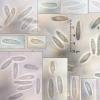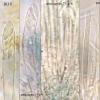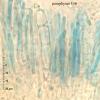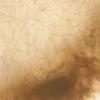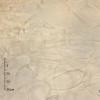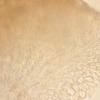
25-07-2012 08:30
 Nicolas VAN VOOREN
Nicolas VAN VOOREN
Bonjour.Je cherche les 2 publications suivantes :G

16-07-2012 10:38
René DougoudChers Collègues, Une récolte d'une espèce du g

21-07-2012 14:09
Hi to everybody:Yesterday we have seen this lentic

22-07-2012 11:50
 Bernard Declercq
Bernard Declercq
Hi,can anyone help me with following paper:Krug (1

21-07-2012 23:04
Gernot FriebesHi,we are looking for help with this quite conspic

20-07-2012 14:03
Gernot FriebesHi,I'm looking for the description of Encoelia gla

19-07-2012 16:46
 Chris Yeates
Chris Yeates
I struggled for a long time with this before "the
Mollisia on grasses
Enrique Rubio,
25-07-2012 19:43
The ascomata, up to 1 mm, grew on a + or- developed brownish subiculum and the hymenium is yellowish or amber. KOH is clearly yellowish (+) but not strongly yellow. Ascospores are eguttulate. Asci IKI b, up to 75 x 8, 8-spored, with croziers. Paraphyses have cylindrical Vb's or fragmenting refractive Vb's,
Medullary excipulum with hyaline or subhyaline textura intricata. Ectal excipulum with vesiculose or angular hyaline or palid yellowish cells. Marginal cells are clavate, hyaline and slightly gelified.
I think in Mollisia citrinopigmentosa but 'my spores' are bigger
What do you think?
Hans-Otto Baral,
26-07-2012 17:59

Re : Mollisia on grasses
Dear Enrique
this is dificult. Your species does not have too much characters, apart from a hyaline excipulum. I nocnur with the genus Mollisia, but more I can hardly say.
I read the diagnosis of Tapesia citrinopigmentosa Svrcek 1993. His illustration does not help much, and he studied the material from the dry state, so we have no info on paraphysis contents. The excipulum is said to be brownish, and the apothecial exterior brown. I hope he did not describe Rodwayella citrinula...
I do not know why the species is in Andreas' key under M. hydrophila, as it is not said to have crystals in the medulla.
Zotto
this is dificult. Your species does not have too much characters, apart from a hyaline excipulum. I nocnur with the genus Mollisia, but more I can hardly say.
I read the diagnosis of Tapesia citrinopigmentosa Svrcek 1993. His illustration does not help much, and he studied the material from the dry state, so we have no info on paraphysis contents. The excipulum is said to be brownish, and the apothecial exterior brown. I hope he did not describe Rodwayella citrinula...
I do not know why the species is in Andreas' key under M. hydrophila, as it is not said to have crystals in the medulla.
Zotto
Enrique Rubio,
26-07-2012 18:03
Re : Mollisia on grasses
Many thanks again, Zotto


